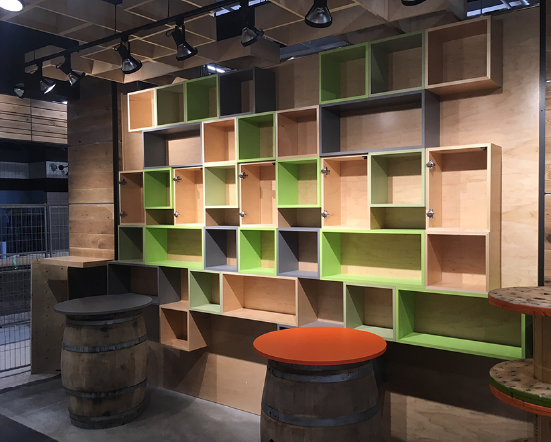Incorporating workplace analytics into design processes allows organizations to create environments that enhance productivity and employee satisfaction. By harnessing data-driven insights, businesses can make informed decisions that lead to effective workplace layouts and strategies.
Understanding Workplace Analytics
Workplace analytics helps identify patterns in employee behaviour.
By analysing data related to how employees interact with their workspace, organizations can uncover insights into their behaviours and preferences. This may include understanding which areas are most frequented, what times employees are most active, and how collaborative spaces are utilized. Such analytical insights promote a more informed approach to design, ensuring that environments are tailored to meet the actual needs of employees rather than assumptions. Furthermore, these insights can help forecast future trends, leading to proactive modifications in workplace design.
Collecting Relevant Data
Data collection is essential for effective workplace analytics.
Organizations must determine what type of data will be most useful in informing their design decisions. This can include quantitative data, such as traffic patterns, as well as qualitative data, such as employee feedback on workspace comfort. Various methods can be employed for data collection, including surveys, observational studies, and digital tracking tools. The goal is to gather comprehensive data sets that provide a well-rounded understanding of employee dynamics within the workspace. By prioritizing relevant data collection, design teams can focus their efforts on areas that will yield the highest impact.
Analyzing Collected Data
Effective analysis turns raw data into actionable insights.
Once data is collected, the next step is analyzing it to uncover trends and insights that can inform design strategies. Utilizing data analytics tools allows organizations to visualize patterns and correlations that may not be immediately obvious. This could reveal, for instance, that certain layout configurations enhance collaboration. Understanding these trends provides a foundation upon which design decisions can be built. It is also crucial to continually re-evaluate this analysis as new data emerges, ensuring alignment with evolving employee needs.
Implementing Changes Based on Insights
Insights gained should lead to tangible changes in workplace design.
Once the data has been analyzed, organizations should be prepared to implement specific changes that align with the insights gained. This may involve redesigning office layouts, increasing the number of collaborative spaces, or investing in technology that facilitates better communication among teams. It’s important to approach implementation thoughtfully, considering how changes will affect employee workflows and overall morale. Proactive communication about these changes can help employees adjust and appreciate the rationale behind the redesigns.
Monitoring Impact of Design Changes
Ongoing monitoring is crucial to assess the effectiveness of new designs.
After implementing design changes, it’s essential to monitor their impact on employee productivity and satisfaction closely. Continuous feedback mechanisms, such as employee surveys and performance metrics, should be established to assess how well the changes resonate with the workforce. This feedback loop will help organizations identify further improvements and adjustments that may be necessary. Monitoring should be viewed as an ongoing process rather than a one-time event to ensure a responsive approaOptimizing Workplace Design Through Analyticsch to workplace design.
Creating a Culture of Data-Driven Design
Encouraging a data-driven mindset among teams can enhance design results.
Organizations should foster a culture that values data-driven decision-making across all levels. By training employees, especially those in design and management positions, to appreciate the significance of workplace analytics, a more collaborative environment can be created. This approach not only improves the design process but also encourages employees to share their insights on workspace effectiveness. Building this culture requires commitment and transparency, enabling teams to feel empowered to advocate for their needs based on data-backed evidence.
Leveraging Technology in Workplace Analytics
Technology plays a pivotal role in supporting workplace analytics.
Utilizing advanced technologies such as AI and machine learning can greatly enhance workplace analytics capabilities. These technologies can process vast amounts of data quickly and efficiently, providing organizations with real-time insights that were previously unattainable. Moreover, integrating smart technology into the workplace, such as IoT devices, can further enrich the data collected. This enables more precise analysis and the ability to adapt workspace conditions based on immediate feedback from users.
Incorporating workplace analytics in design is not merely a trend but a pivotal strategy for fostering productive and employee-centered work environments. By following a structured approach to data collection, analysis, implementation, and monitoring, organizations can achieve designs that are not only functional but also enhance overall employee satisfaction.

